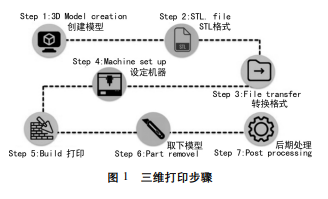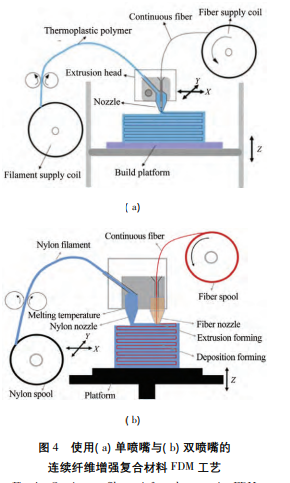3D printing carbon fiber clamp
Overview of 3D Printing:
3D printing technology, also known as additive manufacturing (AM), is a collective term for various printing processes. 3D printing is a rapid prototyping technology based on three-dimensional data models, which accumulates specific materials such as engineering plastic wires, powders, and resins layer by layer to form three-dimensional entities. The principle of 3D printing technology is to use some modeling software to create corresponding 3D models. In the slicing software, the previously established model is cut into layers of a certain thickness, which is converted into a single 2D image. Then, layer by layer, it is processed, stacked and accumulated, and finally formed into a 3D solid. The 3D printing steps are shown in Figure 1.
3D printing technology can manufacture products with any complex structure and modify them anytime, anywhere, which is incomparable to traditional techniques.
 The most common process for 3D printing of carbon fiber-reinforced composite materials is still the FDM process based on material extrusion principle. As shown in Figure 4, the implementation principle of FDM process for continuous fiber-reinforced composite materials can be divided into single nozzle and double nozzle types. Among them, the single nozzle continuous fiber-reinforced composite 3D printer is based on the principle of in-situ impregnation. Carbon fiber filaments come into contact with molten polymer in the nozzle cavity to achieve the impregnation process, and then the impregnated continuous fibers are deposited layer by layer through the nozzle. This printing method has a simple principle but poor impregnation effect; The dual nozzle continuous fiber-reinforced composite 3D printer has two independent nozzles, one for extruding pre impregnated continuous fibers and the other for extruding thermoplastic polymers. This printing process utilizes the design of fiber arrangement to minimize the use of fibers in the workpiece and achieve higher strength.
The most common process for 3D printing of carbon fiber-reinforced composite materials is still the FDM process based on material extrusion principle. As shown in Figure 4, the implementation principle of FDM process for continuous fiber-reinforced composite materials can be divided into single nozzle and double nozzle types. Among them, the single nozzle continuous fiber-reinforced composite 3D printer is based on the principle of in-situ impregnation. Carbon fiber filaments come into contact with molten polymer in the nozzle cavity to achieve the impregnation process, and then the impregnated continuous fibers are deposited layer by layer through the nozzle. This printing method has a simple principle but poor impregnation effect; The dual nozzle continuous fiber-reinforced composite 3D printer has two independent nozzles, one for extruding pre impregnated continuous fibers and the other for extruding thermoplastic polymers. This printing process utilizes the design of fiber arrangement to minimize the use of fibers in the workpiece and achieve higher strength.

The 3D printing technology of carbon fiber composite materials has solved the problems of high cost and complex manufacturing process of traditional composite materials. However, compared with the composite components produced by traditional composite material manufacturing process, there are still problems that need to be solved:
The interlayer shear strength of fiber-reinforced thermoplastic composite 3D printed parts is poor. After the fibers and resin are stacked and formed on the printing platform, the interlayer bonding of the parts is poor because no molding pressure is applied to the Z direction during the 3D printing process. Meanwhile, due to the absence of Z-direction fibers during the layer by layer deposition process, the out of plane performance of the component is much lower than the in-plane performance with fiber reinforcement. Due to these reasons, 3D printed composite components are prone to delamination during service.

